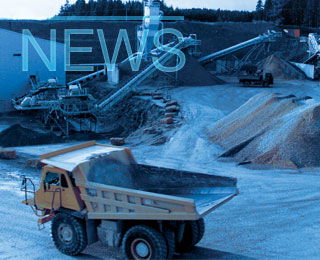Lafarge Canada Inc and Metro Vancouver have reached a three-year agreement that will see drinking water treatment residuals from the Seymour Capilano Filtration Plant be used as a material in cement manufacturing.
The residuals are the solids removed during the drinking water filtration process, and consist of materials from the source water (sediments and naturally-occurring elements) and treatment chemicals (coagulants and polymers). They contain a chemical profile that mimics that of red shale, a virgin aggregate input required as a raw material in cement manufacturing. The agreement, which follows environmental and industrial trials, would mean fewer virgin materials would be needed to be mined, while residuals would be kept out of the landfill.
LafargeHolcim’s Global 2030 Sustainability Plan calls for increased waste-derived resources to be used in its manufacturing processes. The agreement with Metro Vancouver represents a minimum of 10,000tpa.
“We are proud to have this partnership with local government and industry,” said Pascal Bouchard, Richmond Cement Plant Manager. “These residuals will soon be part of our city landscape – reused as an ingredient in concrete that is used in construction from sidewalks to skyscrapers. I am hopeful that the research we have undertaken will allow other municipalities to consider industrial re-use options for their water treatment residuals.”
The Seymour-Capilano Filtration Plant treats water from Metro Vancouver’s Seymour and Capilano water reservoirs, with about 250 truckloads of residuals shipped to the Vancouver Landfill annually. A display will be set up at the plant to educate students and residents about the path it takes for residuals to become cement and eventually concrete.

Indonesia cement demand continues to contract
Cement sales in Indonesia amounted to 3.842Mt in March 2025, a drop of 21.6 per cent YoY compare...